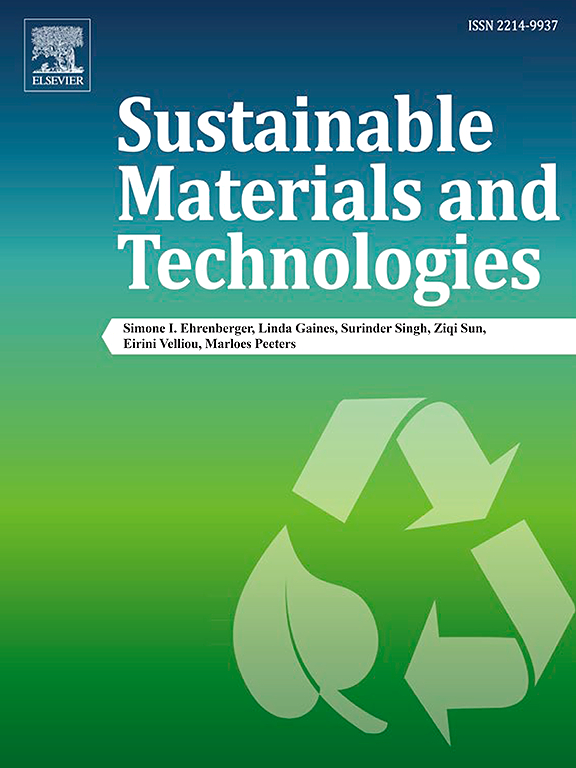FeNi bimetallic functionalized lignin catalyst for sustainable oxidation processes
IF 8.6
2区 工程技术
Q1 ENERGY & FUELS
引用次数: 0
Abstract
The advancement of sustainable and efficient catalytic procedures is crucial in tackling the continuous environmental and industrial challenges, with research being inherently focused on sustainable chemical science to exploit the possibilities of cost-effective bio-based materials for practical applications. Considerably, this investigation delves into the synthesis, characterization, and use of Fe![]() Ni bimetallic functionalized lignin (FeNi@Lig) catalysts using lignin extracted from spent coffee grounds, an underutilized agro-industrial waste. This eco-friendly approach emphasizes the valorization of non-traditional biomass while reducing waste streams. FeNi@Lig was used for oxidation processes, concentrating on the oxidation of bromothymol blue and cellulose for environmental remediation and the production of valuable chemicals. By capitalizing on the multifaceted attributes of lignin, FeNi@Lig catalysts were produced and examined using several techniques, uncovering an effective dispersion of Fe and Ni nanoparticles on the lignin support. The catalysts displayed remarkable efficiency and selectivity in oxidative processes, notably boosting reaction speeds and diminishing the creation of unwanted side products. The oxidation of bromothymol blue (BB) was carried out with a 2 % catalyst, yielding a conversion efficiency of 99.35 % in just 180 s. Likewise, the optimal cellulose oxidation exhibited an oxidation degree of 91.11 % with a 5 % catalyst. The outcomes emphasize the promise of catalysts derived from biomass in industrial settings, advocating for sustainable methodologies and propelling the realm of eco-friendly chemistry.
Ni bimetallic functionalized lignin (FeNi@Lig) catalysts using lignin extracted from spent coffee grounds, an underutilized agro-industrial waste. This eco-friendly approach emphasizes the valorization of non-traditional biomass while reducing waste streams. FeNi@Lig was used for oxidation processes, concentrating on the oxidation of bromothymol blue and cellulose for environmental remediation and the production of valuable chemicals. By capitalizing on the multifaceted attributes of lignin, FeNi@Lig catalysts were produced and examined using several techniques, uncovering an effective dispersion of Fe and Ni nanoparticles on the lignin support. The catalysts displayed remarkable efficiency and selectivity in oxidative processes, notably boosting reaction speeds and diminishing the creation of unwanted side products. The oxidation of bromothymol blue (BB) was carried out with a 2 % catalyst, yielding a conversion efficiency of 99.35 % in just 180 s. Likewise, the optimal cellulose oxidation exhibited an oxidation degree of 91.11 % with a 5 % catalyst. The outcomes emphasize the promise of catalysts derived from biomass in industrial settings, advocating for sustainable methodologies and propelling the realm of eco-friendly chemistry.

求助全文
约1分钟内获得全文
求助全文
来源期刊

Sustainable Materials and Technologies
Energy-Renewable Energy, Sustainability and the Environment
CiteScore
13.40
自引率
4.20%
发文量
158
审稿时长
45 days
期刊介绍:
Sustainable Materials and Technologies (SM&T), an international, cross-disciplinary, fully open access journal published by Elsevier, focuses on original full-length research articles and reviews. It covers applied or fundamental science of nano-, micro-, meso-, and macro-scale aspects of materials and technologies for sustainable development. SM&T gives special attention to contributions that bridge the knowledge gap between materials and system designs.
 求助内容:
求助内容: 应助结果提醒方式:
应助结果提醒方式:


